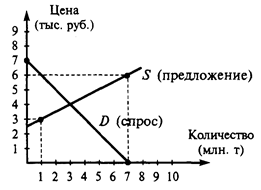| №
| Thematic plan of practical training
| Продолжит.
(в час.)
|
| 3 semester
|
| Credit 1
|
|
| General microbiology. Classification and taxonomy of microorganisms. Morphology of bacteria. Technique of smear preparation. Simple methods of staining. Gram stains. The structure of the bacterial cell. Detection methods of bacterial cell components. Acid-fast bacilli.
|
|
|
| Physiology of microorganisms. Basics bacteriological method. Basic principles of cultivation of microorganisms in nutrient media. Characteristics of nutrient media. Requirements for nutrient media. Isolation of pure cultures of 7aerobic bacteria (Day 1,2,3,4 of study).
|
|
|
| Ecology of microorganisms. The microflora of the environment. Sanitary and microbiological studies. Normal microflora of the human body. Age features of oral microflora. Antimicrobial agents and factors. The use in dentistry. Methods of disinfection and sterilization of dental instruments. Asepsis. Antiseptic.
|
|
|
| Infection. Pathogenicity factors of bacteria. Methods for determination of pathogenicity factors. Immunity. Types and mechanisms of immunity. Factors oral antimicrobial protection. Immunoprophylaxis and immunotherapy of infectious diseases in dental practice. Hypersensitivity manifestation in the oral cavity.
|
|
|
| Genetics of bacteria and viruses, genetic recombination (transformation, transduction, conjugation). Basics of variation, modification, mutation. Molecular genetic research methods (PCR, DNA-DNA hybridization).
|
|
| Credit 2
|
|
| Fundamentals of Clinical Microbiology. Etiologic role coccal microflora in chronic inflammatory and infectious and allergic diseases, microbial lesions of teeth and oral mucosa. Periodontal disease microbial etiology. Gingivitis. Periodontitis. Prevention of dental caries. Halitozis.
|
|
|
| Microbiological diagnosis of thrush. Gingivostomatit Vincent (fuzospirohetoz). Microbiological diagnosis of actinomycosis of the face and mandible.
|
|
|
| Viruses. Structure and classification. Reproduction of viruses. Cultivation of viruses. Bacteriophages.
Orthomyxoviruses (flu virus). Paramyxoviruses (parainfluenza, mumps, measles, respiratory syncytial virus). Adenoviruses. Poxviruses. Rhabdoviridae. Principles of microbiological diagnosis of hepatitis and herpes viruses role in human pathology. Principles of treatment. Prevention.
|
|
|
| Picornaviruses - poliomyelitis, Coxsackie viruses, ECHO. Arboviruses. Rubella virus. Principles of treatment, prevention.
Oncoviruses. Human Immunodeficiency Virus. Nature of oral mucosa lesions in HIV infection (hairy leukoplakia). Principles of treatment, prevention.
|
|
|
| Practical aspects of the prevention of nosocomial infection in the dental clinic. Zone of microbial contamination in the dental office. Compliance rules biosecurity dentist.
|
|
|
| Total for the academic year
| 25h
|
| | | | |
Type of course:
Passive method: oral and written surveys, portfolio presentation, SEL visit
Active method: meeting and practical work discussion, workbook and study protocol preparation, multiple choice questions test, practical skills assessment, work with multimedia databases, computer models and programs, visual materials and tables.
Interactive ( work with case studies, group work, quizzes, role playing tasks, brainstorming, critical thinking, mini-researches, etc.)




